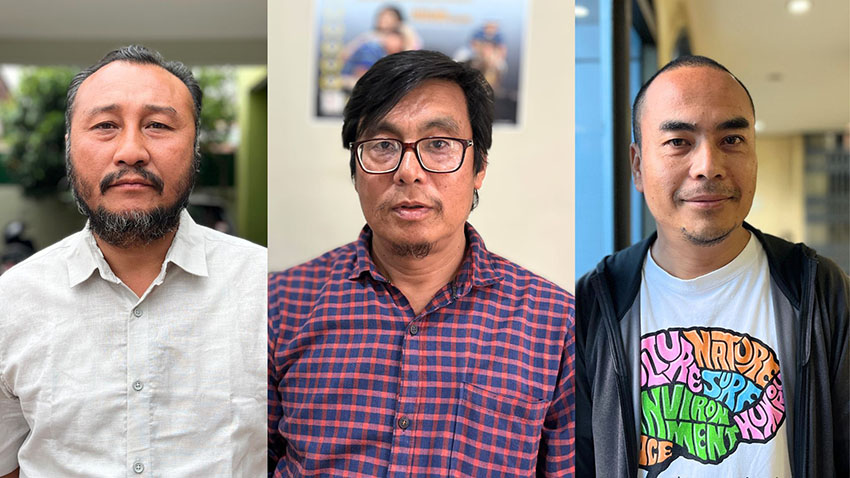Inhabiting the Northeastern hills of Manipur in India and the Somra tract in Myanmar, the Tangkhuls (with a population of about 2.5 lakhs) constitute one of the largest tribes among the Nagas. They have their own custom, tradition, and culture regulating their collective life, which are passed down from generation to generation through oral traditions. Guided by a set of customary values and practices, socio-political and belief systems, they have upheld the social setup in keeping with the traditional social structure.
While some traditional practices have gradually disappeared for various reasons, customary laws remain largely intact. In the words of Peter Pheiray, “The importance of our customary law is that Hau [Tangkhuls] were not dependent on the law of others for their governance.” Although, certain features of traditional social stratification have altered in due course of time, the social structure bolstered by customary laws continues to circumscribe women within their traditional roles. It is true that cultural values can be a subtle reinforcing agent that perpetuate gender inequality. The oral traditions of the Tangkhul society, for instance, predominantly portray women as inferior to men, thereby designating and structuring women’s lives within the patriarchal norms that impose restrictions on women’s rights and freedom.
T.C. Hodson observed thus: “The Naga society is patrilineal and male ascendancy is complete with them. The headship of the family, lineage, clan the village etc. is always passed on the male descendants. Succession and inheritance is, therefore, transmitted in the male line by following the rule of primogeniture”. By customs, property is inherited only by the male child. The female child cannot inherit any of the family’s landed properties except movable properties like ornaments, utensils, cattle, etc., given to a daughter as a marriage gift. If parents have only daughters, then the property is customarily inherited by the nearest eldest surviving male sibling of the father. In case, there is no surviving male sibling of the father, then the property should be inherited by the eldest nephew of the eldest sibling of the father. If a father with only daughters has no male siblings, then the inheritance property should go to the head of his clan, called “Bipa.”
Today, with the rise of education and increasing awareness of legal rights to property, there is a growing need within Tangkhul Naga society and other tribal communities to reassess the traditional property inheritance system. Some educated women advocate for equal property rights, challenging the age-old practices that limit their economic independence. Throughout the world, pressures on land are rapidly increasing, and land concentration is rising. Some scholars have noted the importance of women’s land rights and its continuity. Land is a life-sustaining resource to be shared and protected and not a commodity to be privatized and sold. Some studies indicate that women’s access to, use of, and control over or ownership of land allowed them to participate in decision-making processes, acquire more power and autonomy, and contribute to their well-being and that of their families and communities. Women’s right to inherit land and property is central to women’s economic empowerment. It is also a social asset crucial for cultural identity, political power, and participation in public life. It also enhances their ability to address vulnerability and protection against gender-based violence.
With globalization, the status and role of women in the socio-cultural, political, and religious aspects of society have changed immensely. Today, the concept of men not leaving the family and women as fleeting creatures is becoming less applicable given the changing family patterns, social structure, and the common migration trend to urban settings. There are now urban families and economically independent women who can inherit and own private properties. The scenes are slowly changing; some families, at their own discretion, give acquired land to their daughters, such as paddy fields, residential plots, woodland, etc., in urban areas, as it didn’t affect tribal village boundaries.
Yet, on the whole, women in Tangkhul society still encounter structural inequality in various forms. For instance, even though women have gained much traction in terms of progress in various fields, including education and employment, they are still denied justice in the socio-cultural, political, and religious spheres among others. Thus, there are still essential areas where women’s active participation and regard for women as equals are found wanting. It is observed that tradition-bound social structure and culture impede the empowerment of women in Tangkhul society. It is, therefore, suggested that religious practices, customs, and traditions that discriminate against women need serious revisit in order to realise gender equality, in particular, and more equitable society, in general. It may be pertinent to mention here that the United Nations General Assembly passed the Convention on the Elimination of Discrimination Against Women (CEDAW) in December 1979, calling for stringent action against any form of practices that undermine women’s rights. The convention became operational as international treaty on 3rd September 1981. Since then, more than a hundred nations around the world have adopted the convention and agreed to be bound by its provisions. As an evolving society, considered to be among the pioneers of education and modernity, at least among our neighbouring communities, it is desirable that we emulate with the rest of the world and not shy away from infusing modern values, ideals and principles even if it means making uncomfortable structural changes in our social and cultural system.

The writer is an Assistant Professor Department of Sociology St. Joseph College Ukhrul. The views expressed are the writer’s own











